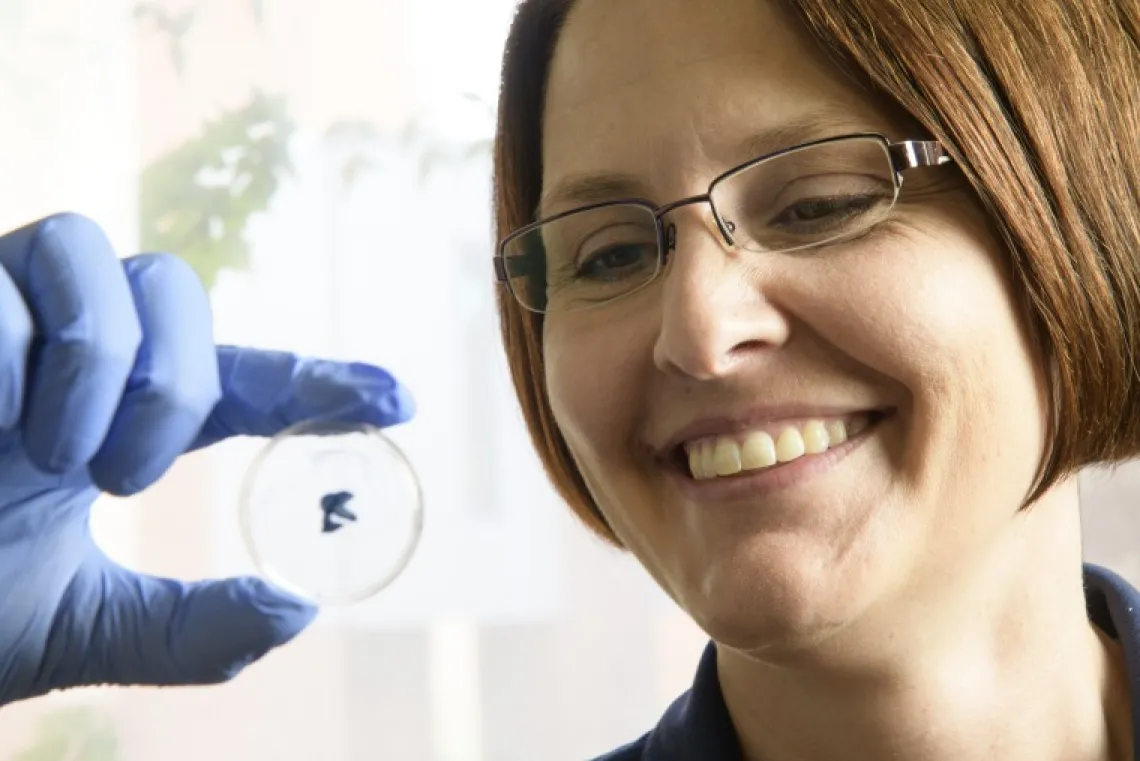Deciphering causes of and developing treatments for oral, head and neck cancer
We’re highlighting BIO5 researchers’ strides against malignant cancers during Oral, Head and Neck Cancer Awareness Week.

Oral, head and neck cancers account for more than 330,000 deaths worldwide annually and 4% of all cancers in the U.S. Unfortunately, more than two-thirds of Americans are not screened for these malignancies by their health care providers. To prevent disease and improve quality of life, researchers at the BIO5 Institute are working to address various aspects of these cancers.
Malignant head and neck tumors affect the mouth, oropharynx (back third of the tongue, back of throat and tonsils), nasopharynx (behind the nose), hypopharynx (lower throat), and the voice box.
Tobacco and alcohol use cause nearly 75% of all oral, head and neck cancers. Carcinogens – substances that promote cancer formation – in these products damage our genetic material, DNA. They also impair DNA repair, leading to the uncontrolled growth of mutant cells that eventually form palpable tumors in the neck or mouth.
Human papillomavirus (HPV), though typically known for causing genital warts and cervical cancer, is emerging as leading cause of head and neck cancers, especially in the U.S. Two cancer-causing HPV proteins inhibit cell death and promote uncontrolled growth, thus leading to tumor formation.
Scientists still don’t know exactly how the virus is able to infect and persist in our cells for years without being detected by the immune system. Samuel Campos, associate professor of immunobiology, molecular and cellular biology, and cancer biology, aims to understand the complex interactions between HPV and our cells – particularly how the virus enters and evades detection.
“Viruses like HPV are the original, and best, cell biologists,” Campos said. “Studying their basic biology will yield great and unexpected insights into humans and how our cells work at fundamental levels.”
Infection longevity is a major key to causing cancer, but interestingly, many persistent viruses don’t cause disease. Koenraad Van Doorslaer, assistant professor of virology and genetics, seeks to understand why evolutionarily related viruses differ in their carcinogenic abilities.
Van Doorslaer, also a professor of immunobiology and cancer biology, was recently awarded an R03 grant from the National Institute of Dental and Craniofacial Research (part of the National Institutes of Health) to study how HPV alters oral cells to promote virus production. With the two-year $200K grant, he and BIO5 Postdoctoral Fellow Robert Jackson will create life-like 3D models to study processes associated with the viral life cycle.
Work from Van Doorslaer, Jackson, and Campos will ultimately pave the way for better prevention, detection and treatment strategies for HPV infection and HPV-related oral, head and neck cancers.
Head and neck cancers are highly treatable if detected early, but due to inadequate screening, many aren’t detected until they have advanced. Current therapies include surgery, radiation and chemotherapy.
Head and neck radiation often negatively affect salivary gland function, causing severe dry mouth, swelling, malnutrition, and increased oral infections. The side effects of radiation therapy can persist – often for months, years or indefinitely after the treatment has finished. Because such oral cavity destruction results in diminished quality of life, Kirsten Limesand, professor of nutritional sciences and assistant dean for graduate education in the College of Agriculture, Life, & Environmental Sciences, investigates mechanisms of salivary gland damage, clinical prevention measures, and restoration therapies.
“The severity of side effects from treatments often has a major influence on a patient’s decision to continue therapy. Unfortunately for head and neck cancer treatments, treatments for oral cavity damage are temporary and palliative. Our work hopes to expand the options to curative treatments,” said Limesand, who is also a professor of cancer biology and physiological sciences.
Together, these BIO5 members will shape the way scientists and physicians approach oral, head and neck cancers, as well as improve patient quality of life.
